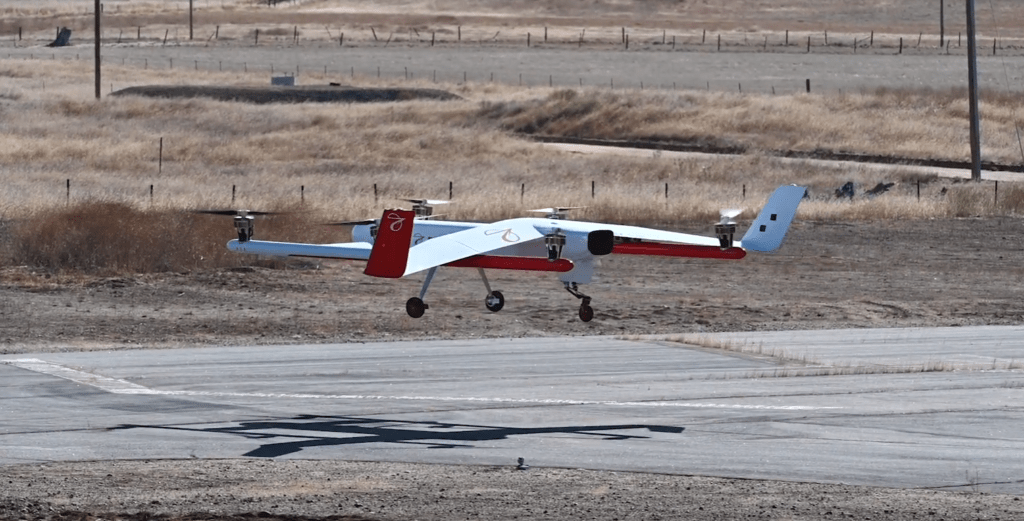Plenty of technology and logistics companies are working on projects that involve drones carrying out last-mile deliveries. Many others are exploring how eVTOL flight could change the way people travel from one place to another.
A related application that’s just as useful but not quite as glamorous is aerial cargo transport.
Elroy Air is a San Francisco startup developing delivery drones capable of carrying larger payloads than a single Amazon parcel or a pizza.
The team, which includes aerospace engineers, industrial designers, computer scientists and supply chain experts from MIT, Georgia Tech, Stanford, Embry-Riddle, 3D Robotics, Airware, Honeywell, Google Wing and Uber Freight – among others – this week released test footage of their new commercial platform: the Chaparral.
Elroy Air isn’t quite at the delivery stage yet. During a test in partnership with the Naval Postgraduate School, the aircraft reached a maximum height of ten feet and hovered for just over a minute.
The Chaparral weighs around 1200lbs and has been designed to be an end-to-end cargo delivery platforms. It’s capable of ferrying a 250-500lbs (100-225kg) payload up to 300 miles (500km).
The platform doesn’t require an airport or a specialist electric charging station. Elroy Air says it has “autonomous flight and advanced safety architecture”, along with autonomous cargo loading and unloading.
Speaking to VentureBeat, CEO and co-founder David Merrill said of the successful test, “Today is an important step toward the future of logistics. Since the earliest days of powered flight people have wanted to use the skies for convenient, rapid cargo transport to anywhere.
The airport-dependence of traditional manned air cargo options shows that we still have a long way to go. Autonomous [vertical takeoff and landing] cargo systems will make the dream of ultra-responsive logistics possible, because they decouple air cargo from airports.”
Elroy Air anticipates that the company’s technology could be used in a range of industries, from humanitarian logistics to military operations.
Combining autonomous flight with autonomous loading and unloading would allow organizations to deploy the aircraft to remote locations and expedite deliveries or camp setup without the need for boots on the ground.
Malek Murison is a freelance writer and editor with a passion for tech trends and innovation. He handles product reviews, major releases and keeps an eye on the enthusiast market for DroneLife.
Email Malek
Twitter:@malekmurison
Subscribe to DroneLife here.
